37+ Conversion Rate Optimization Statistics For 2024: Usage, Facts, & Trends
Marketers tend to spend a lot of time, money, and energy on driving traffic to their websites, but here’s the thing: that’s the easy part.
The real challenge is converting as much of that traffic as possible through effective conversion rate optimization.
This is also the most important part, as even the smallest difference in your conversion rate can make a big difference on your bottom line.
If you were to increase your conversion rate a single percentage point from 1% to 2%, you double your revenue.
With that in mind, I’ve put together a list of the most important CRO stats to inform your conversion rate optimization strategy.
Editor’s picks
- The average website conversion rate is 2.35%. (Wordstream)
- Sporting goods have the LOWEST average eCommerce conversion rate by industry (2.35%). (Yotpo)
- The highest average conversion rate by traffic source is paid search (2.9%). (Smart Insights)
Average conversion rate statistics
To help you to get a sense of where you’re at right now, let’s start by looking at some average conversion rate statistics that you can measure your website up against.
The average website conversion rate is 2.35%
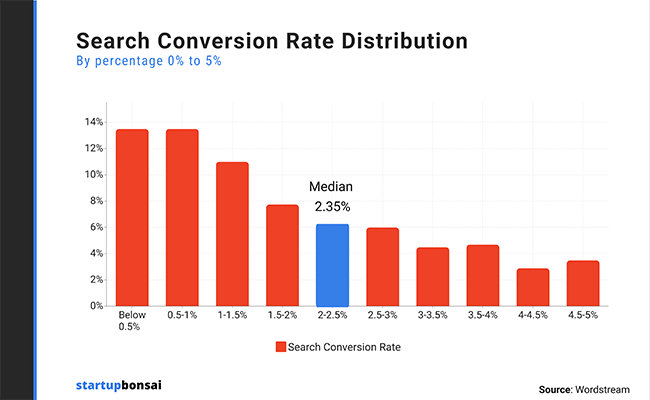
This is the average conversion rate across all industries, but it’s important to remember that the figure varies dramatically from website to website. Still, it’s a good starting point to set the bar at. If you’re hitting around the 2-3% mark, you’re not doing too badly. Source: Wordstream
The best websites have conversion rates of 11% or more
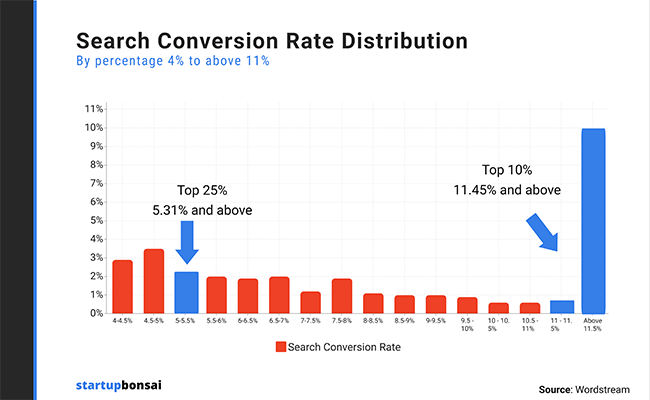
There’s a big difference between the top performers and the worst performers when it comes to CRO. The top 25% of websites have conversion rates of at least 5.31%, and the top 10% boast conversion rates of 11% or more. That’s almost 5 times more than the average.
Source: Wordstream
The average mobile conversion rate is around 1.53%
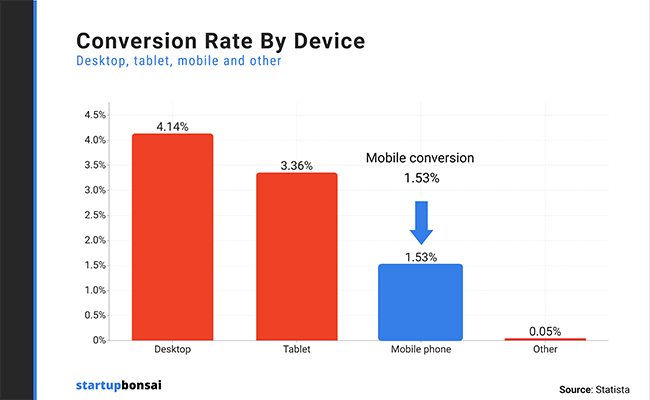
It looks like people just don’t like to convert when they’re using their mobile phones. This could be for several reasons, but the most likely reason is that it’s harder to type accurately on smaller screens, which might be enough to put website users off of the idea of filling out lead forms or putting in their payment details.
Source: Statista
…compared to 4.14% on desktop
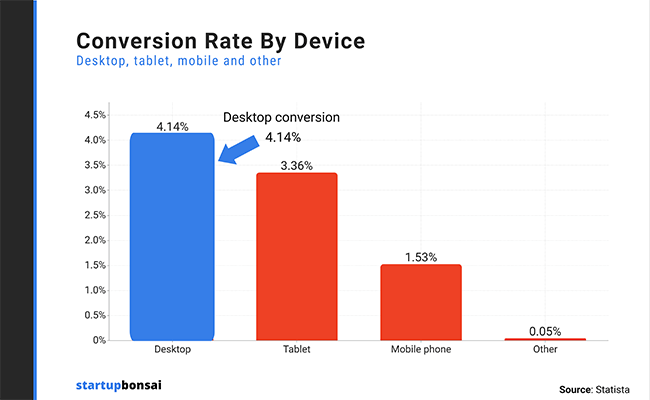
Desktop users, on the other hand, are much more conversion-ready. They convert at almost 3 times the rate of mobile users. Note that this doesn’t mean you should be focusing exclusively on desktop – half your traffic probably still comes from mobile users.
Source: Statista
Facebook ads convert at around 9.21% on average
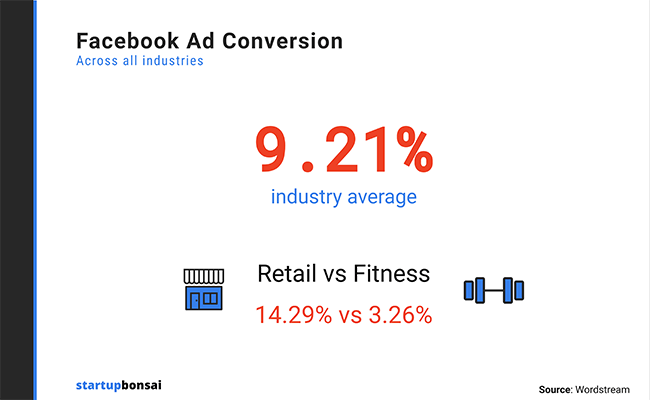
That’s the average Facebook ad conversion rate across all industries, but it varies substantially between them, so it might not be the best benchmark to measure your own ad performance against. For example, retail Facebook ads convert at just 3.26%, compared to fitness ads, which convert at 14.29%. (Source: Wordstream)
Sporting goods have the LOWEST average eCommerce conversion rate by industry (2.35%)
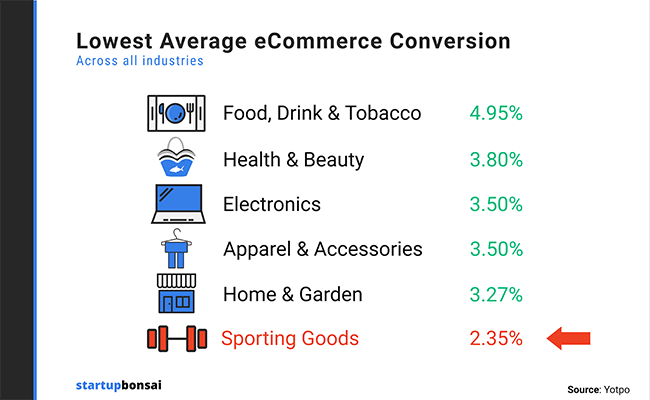
Of all eCommerce stores, those selling sporting goods have the lowest average conversions. The ‘why’ isn’t entirely clear. It might be because customers like to get their sporting goods instantly and as a result, may be more inclined to just walk into a store and get them.
Source: Yotpo
Food and beverages have the HIGHEST average eCommerce conversion rate by industry (4.95%)
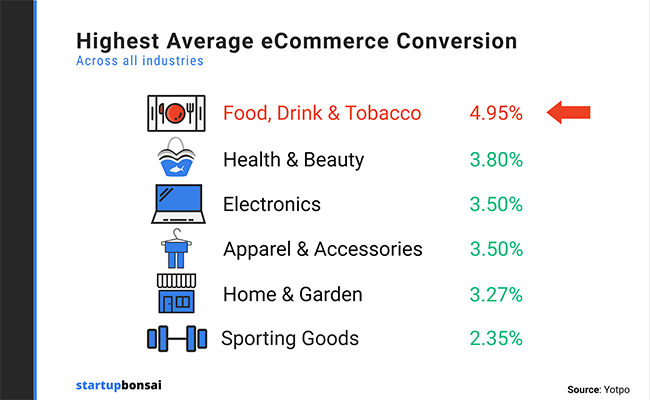
This one seems a little surprising to me, but it’s worth knowing. If you’re selling food and beverages, you can aim a little higher with your conversions.
Source: Yotpo
The highest B2B average conversion rate by industry is professional/financial services (10%)
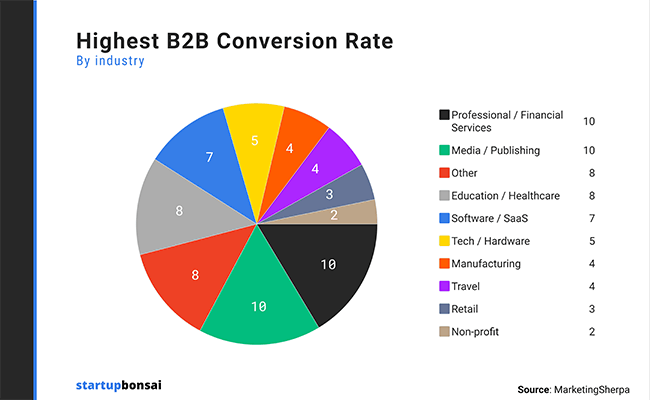
In the B2B space, it’s professional and financial service sellers that convert the most website visitors.
Source: MarketingSherpa
The lowest B2B average conversion rate by industry is non-profit (2%)
Charities and non-profit organizations are facing an uphill battle when it comes to conversions, but no surprises there. (Source: MarketingSherpa)
The highest average conversion rate by traffic source is paid search (2.9%)
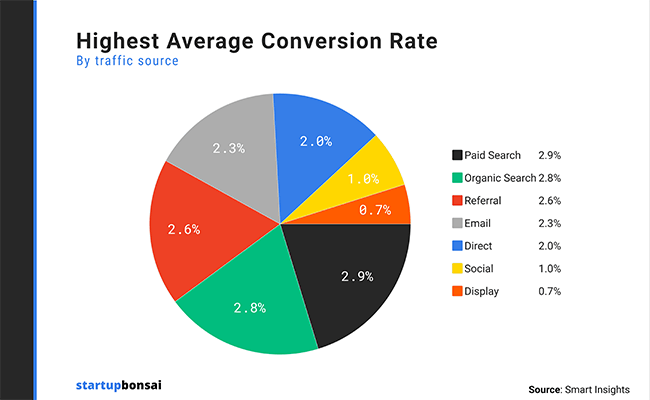
Yep, search converts better than email – almost three times better. And it’s not just paid search either, organic search is almost as high at 2.8%.
Source: Smart Insights
CRO spending statistics
How much of your marketing budget should you be spending on your CRO efforts? It’s an important question. Here are some statistics that might help you to find the answer.
Companies spend just $1 on conversion rate optimization for every $92 spent on customer acquisition
This shocking statistic highlights just how huge the gap is between the amount we spend on getting traffic and the amount we spend turning that traffic into customers. Many businesses are spending too much on traffic and not enough on conversions. Double your conversion rate, and you can afford to half your traffic. (Source: Econsultancy)
Top-converting companies spend at least 5% of their budget on CRO
This speaks for itself. Spend more on CRO and you’ll convert more of your customers. It’s the key to generating more revenue. (Source: Adobe)
55.5% of companies plan to increase their CRO budget
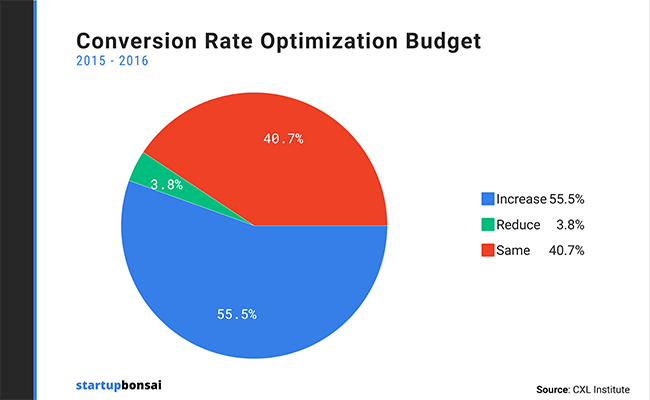
Businesses are increasingly recognizing just how important CRO is and spending more on it. Over half of those that responded to a 2016 survey planned to increase their budget.
Source: CXL Institute
Companies spend $2,000 on CRO tools on average
That seems like a lot, but if those tools bring even a slight increase in conversions, it’s probably worth it. With CRO software tools growing more advanced by the day, it’s important to look into what they can do for you. (Source: Forbes)
Around two-thirds of businesses still don’t have a structured CRO strategy in place
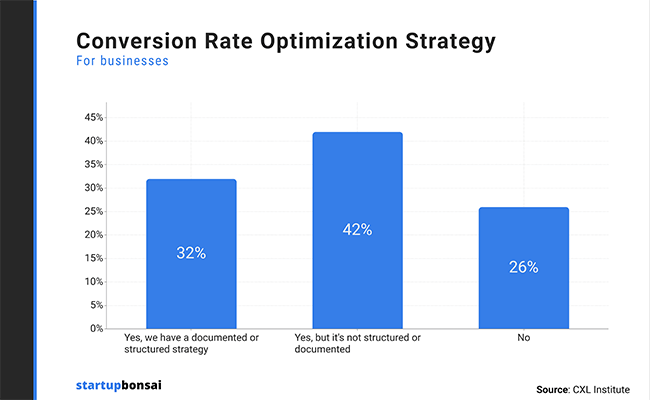
Surprisingly, 68% of small businesses have no documented or structured conversion rate optimization strategy.
Source: CXL Institute
Landing page optimization statistics
Nailing the design and layout of your landing pages, and using them correctly, is critical to effective CRO. Here are some important statistics about landing page optimization worth knowing about.
Around half of marketers create a new landing page for each marketing campaign
The whole point of landing pages is that they’re super-targeted, so it makes sense to build a brand new one for each of your campaigns, which is why 48% of marketers do just that. (Source: Marketing Experiments)
Increasing your number of landing pages from 10 to 15 increases leads by 55%
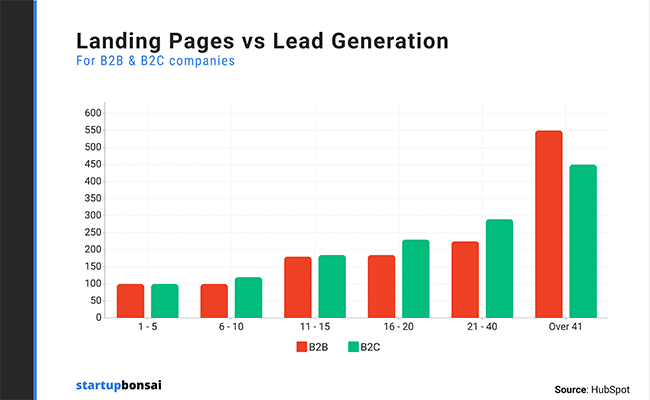
This is just further evidence that making a new landing page for each of your campaigns is good practice. Companies that have a greater number of landing pages convert more of their traffic to leads.
Source: HubSpot
Websites with 40+ landing pages generate 12x more leads
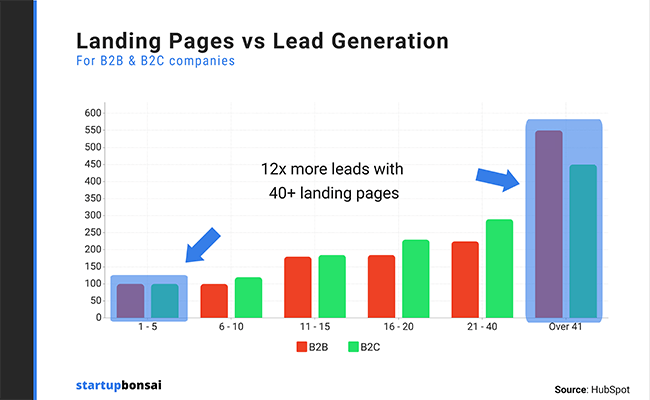
And this statistic drives the point home even further. Companies that are the most liberal when it comes to building multiple landing pages generate 1200% the number of leads than those with just one.
Source: HubSpot
62% of B2B businesses have less than 6 landing pages
Despite the benefits of building more landing pages, the majority of businesses still have less than 6. (Source: Hubspot)
On average, 44% of B2B clicks go to homepages, not landing pages
Not only that, but 44% of B2B businesses don’t even bother to use landing pages for their campaigns, choosing instead to drive traffic to their homepages. This is rarely a good idea – homepages don’t convert as well as landing pages as your visitors have too many navigation options. You want them to land on a page that has only one goal. (Source: Hubspot)
Reducing the number of form fields from 11 to 4 generates 120% more conversions
If you’re including a lead generation form on your website, keep the number of form fields to a minimum. As this statistic proves, your customers don’t like to fill out rows and rows of information. By keeping the data you ask for to a minimum, you’ll drive more conversions. (Source: Unbounce)
Multi-page forms have higher average completion rates than single-page forms
The average completion rate of multi-page forms is 13.85%, compared to 4.53% on single-page forms. This goes back to the point we made above about how customers prefer a lower number of form fields.
By separating your forms into several pages, you can include a fewer number of fields on each page, thus avoiding overwhelming your visitors right off the bat. If you absolutely need to ask users to fill out more than 4 form fields, consider using multi-page forms instead.
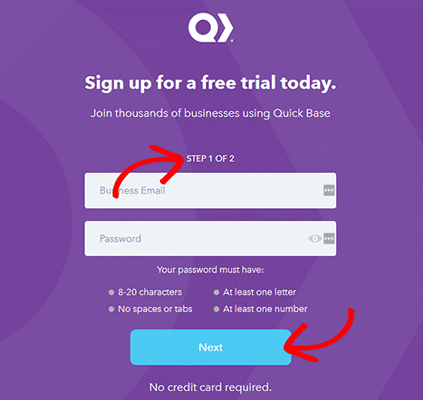
‘Click Here’ converts better than ‘Submit’
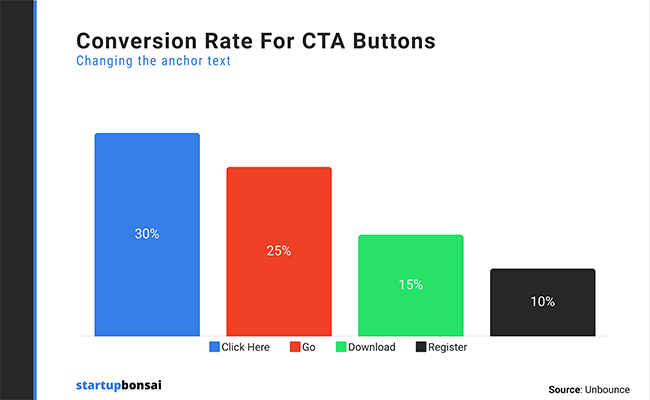
The smallest details can make the biggest difference, and even the anchor text you use for your form CTA buttons can dramatically impact your conversions. Believe it or not, using ‘submit’ as your CTA anchor text can reduce conversion rates by as much as 3%.
Source: Unbounce
Asking for a telephone number will hurt your conversions
Avoid asking your users for their phone number unless it’s absolutely necessary. Studies suggest that including a telephone number form fields can reduce conversion rates by 5%. (Source: Unbounce)
Marketing automation boosts qualified leads by 451%
Marketing automation tools are growing more and more sophisticated. Studies show that using marketing automation to nurture your prospects leads to a 451% increase in qualified leads. (Source: Business2Community)
Longer landing pages generate 220% more leads than shorter landing pages
While it’s important to make sure all the important information on your landing pages is visible above the fold, don’t be afraid to include more information further down. The data suggests that long-form landing pages actually perform better than short-form pages. (Source: Marketing Experiments)
Removing page navigation from your landing pages boosts conversion rates by up to 100%
Landing pages are meant to get your visitors to take one specific action, and the only elements on the page should be those that serve that purpose. Anything else is just a distraction. Navbar’s and other page navigation elements create friction and distract your visitors from what you’re trying to get them to do, so get rid of them.
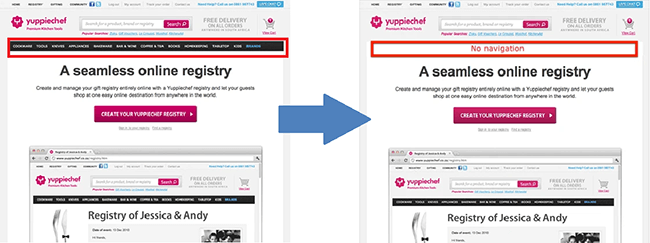
Conversion rate testing statistics
CRO is a never-ending process. You’ve got to constantly test your marketing material and landing pages to see what’s working, what’s not, and work out how you can improve. Here are some CRO statistics that show you how other businesses test their conversion rates.
56% of marketers say A/B testing is their preferred CRO method
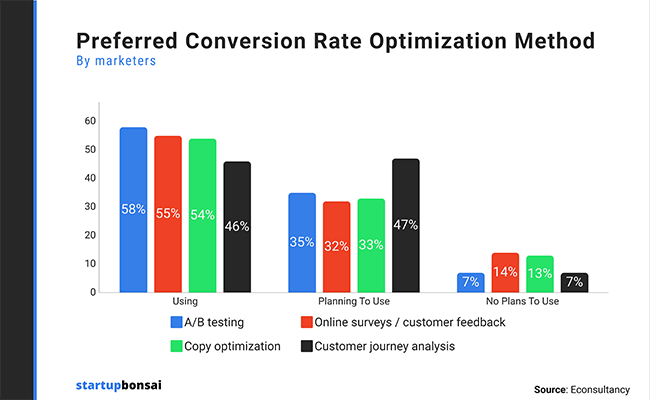
A/B testing involves creating two versions of your marketing materials with one element changed, comparing the results, and adopting the version that has the highest conversion rate. It’s the go-to CRO methodology for the majority of marketers.
Source: Econsultancy
Businesses that successfully boost conversion rates perform 50% more tests
This statistic speaks for itself. The more tests you run, the more successful your CRO efforts are likely to be. (Source: Econsultancy)
Over half of all companies that use landing pages test them to increase conversions
52% of companies with landing pages use A/B testing in order to boost conversions. (Source: Marketingexperiments)
Most companies avoid multi-page testing as it’s too difficult
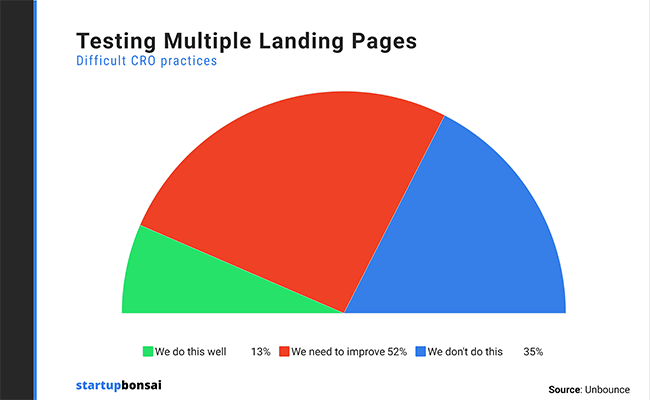
While effective, testing multiple landing pages at once is considered an advanced methodology that most marketers consider to be too difficult, so the adoption of this method is still low.
Source: Marketing Charts
Conversion rate optimization tips & strategies
Before we wrap up, here are some super useful statistics that provide tips on how you can better optimize your marketing materials and website pages to generate more conversions.
Videos increase landing page conversions by 86%
If a picture speaks a thousand words, a video speaks 10 thousand. You have limited real estate to work with on your landing pages, so try sticking a video on there to give your viewer’s extra information and see if it boosts your conversion rates. (Source: EyeView)
User-generated content boosts conversion rates by 161%
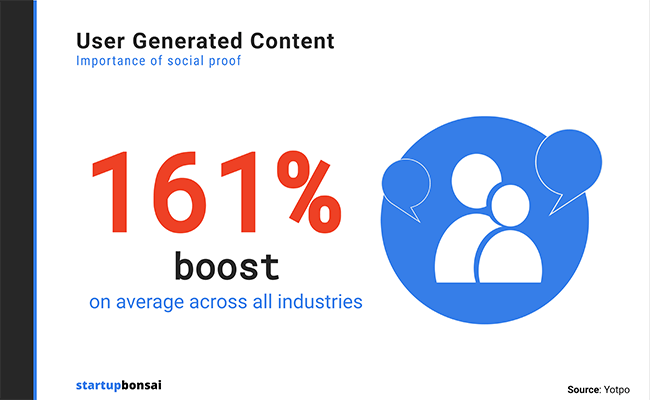
This is the average figure across all industries and demonstrates just how important social proof is to your customers.
Source: Yotpo
Personalized CTAs outperform non-personalized CTAs by 42%
Personalization is one of the most important new trends in marketing, and this stat proves it. Personalizing your call-to-action can help you to convert as much as 42% more visitors. (Source: HubSpot)
Personalized email messages generate 10% more conversions
Don’t just personalize your CTAs, personalize your email messages too. Studies show that personalized emails increase conversions by around 10%, on average. (Source: Aberdeen)
Anchor text CTAs outperform button CTAs by 121%
You hear a lot of talk about the most effective CTA button designs, but it might be better to do away with them completely. This study found that a well-worded text link is more effective than buttons. (Source: Hubspot)
Slow loading pages reduce conversions by 7%
If you thought site speed only mattered for SEO, think again. Just a 1-second delay in your site loading time can hurt your conversions by up to 7%. (Source: Neil Patel)
Final thoughts
That concludes our list of CRO statistics. Hopefully, they’ve given you some food for thought and you’ve managed to extract some useful insight from them that will help to inform your strategy in the future.
If you’re looking for more marketing statistics, we’ve got plenty, so make sure you check them out:
